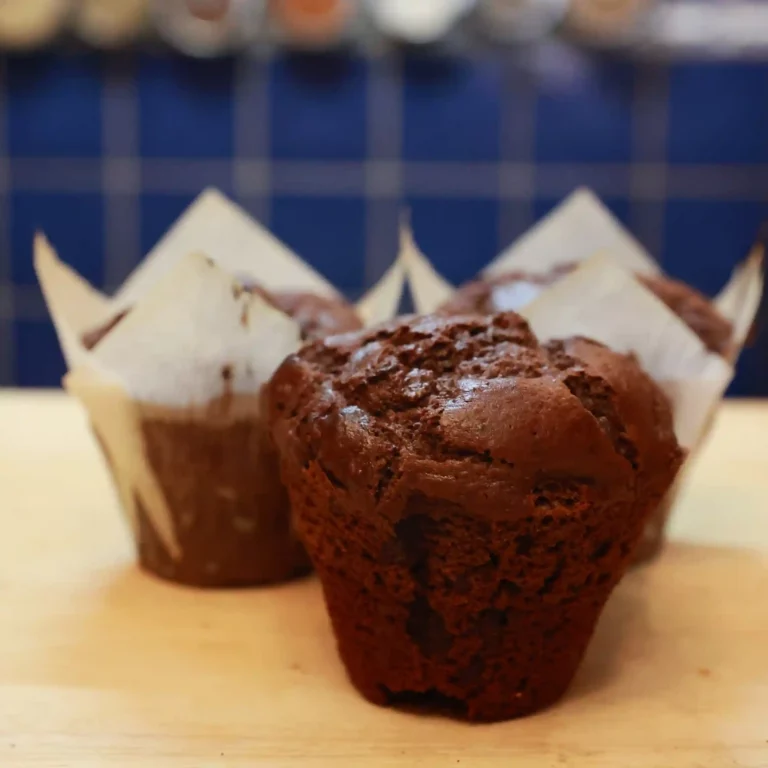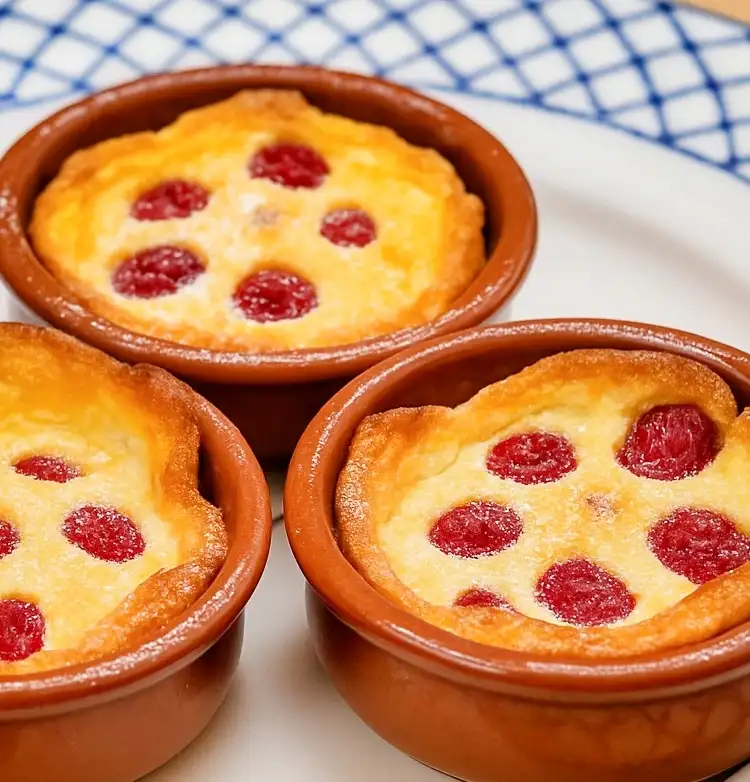Classic French Tarte Tatin (Upside-Down Caramelized Apple Tart) – Foolproof Recipe
A proper tarte tatin is one of those recipes that feels like pure French magic: just apples, sugar, butter, and a single disc of pastry, flipped out of the pan into a glossy, upside-down caramelized apple tart. It’s deceptively simple, but anyone who has tried it knows it can go wrong very quickly—burnt caramel, apples swimming in syrup, soggy dough… all the classics.
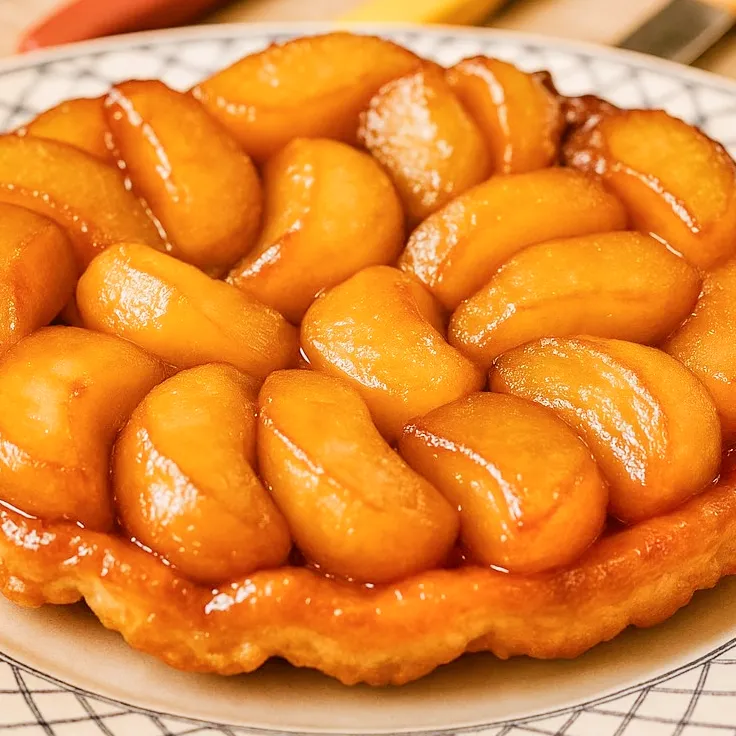
This version is based on my original tarte tatin YouTube video, but I’ve made a few important changes since publishing it. The sugar and butter are now precisely measured, the caramel is reduced further to avoid a watery result, and there’s a pinch of salt and a touch of acidity to balance the sweetness. The goal is a recipe that works for home bakers in Canada, the United States, and anywhere people love classic French desserts.
If you enjoy French-inspired desserts like moist apple cake, pear and almond tart, or a rustic raspberry clafoutis, this upside-down caramelized apple tart will quickly become a favorite fall and winter dessert.
What Is Tarte Tatin?
Tarte tatin is a classic French upside-down apple tart created in the late 19th century, where the apples are first cooked in caramel in a skillet, then topped with pastry and baked. Once cooked, the tart is flipped onto a plate so the apples sit on top, lacquered in a deep golden caramel.
Done right, a tarte tatin has:
- Apples that are spoon-tender but still hold their shape
- A deep amber caramel that tastes buttery, slightly bitter, and not overly sweet
- A crisp, fully baked crust that soaks up just enough caramel without turning soggy
This updated version gives clear quantities, visual cues, and timing so you can get that perfect bistro-style result at home.

Best Apples for Tarte Tatin
For North American home bakers, choose firm, slightly tart apples that hold their shape:
- Granny Smith
- Honeycrisp
- Cortland
- Northern Spy
Avoid very soft apples (like McIntosh) which can collapse and release too much juice. The recipe is calibrated so the apples release enough juice to blend with the sugar and butter, then reduce into a thick, glossy caramel.
If you like baking with apples, you might also enjoy this pineapple upside-down cake twist on the same “flip and reveal” idea, or a classic French fruit tart with pastry cream.
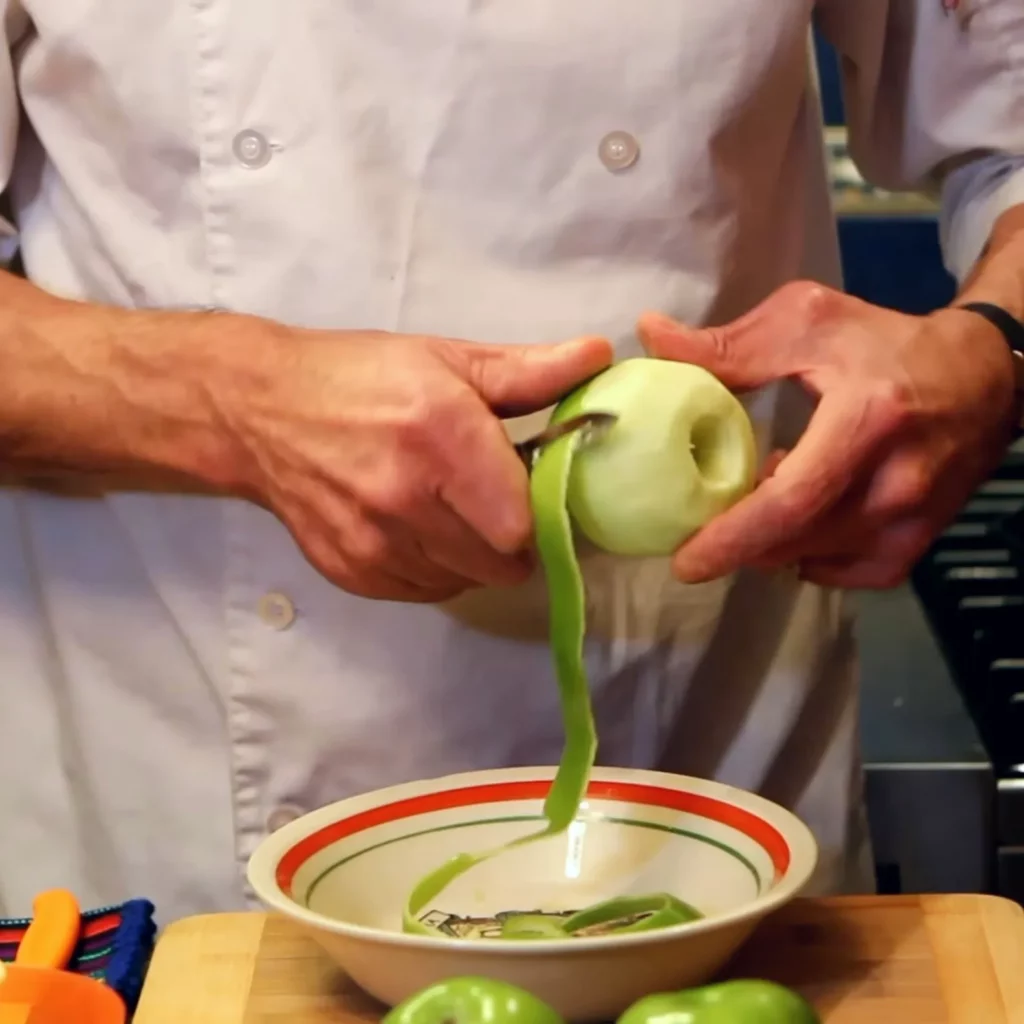
Step-by-Step Overview
- Make a dry-ish caramel base
Sugar and butter are cooked together directly in a 9-inch (21 cm) oven-safe skillet until the mixture turns a deep golden amber. A pinch of salt and a few drops of lemon help keep the caramel balanced and smooth.

- Pack in the apples very tightly
The apples are cut into large wedges and pressed into the caramel, core side up, in a tight rosette. A second layer of wedges can be added to make a tall tart that sinks slightly as it bakes.
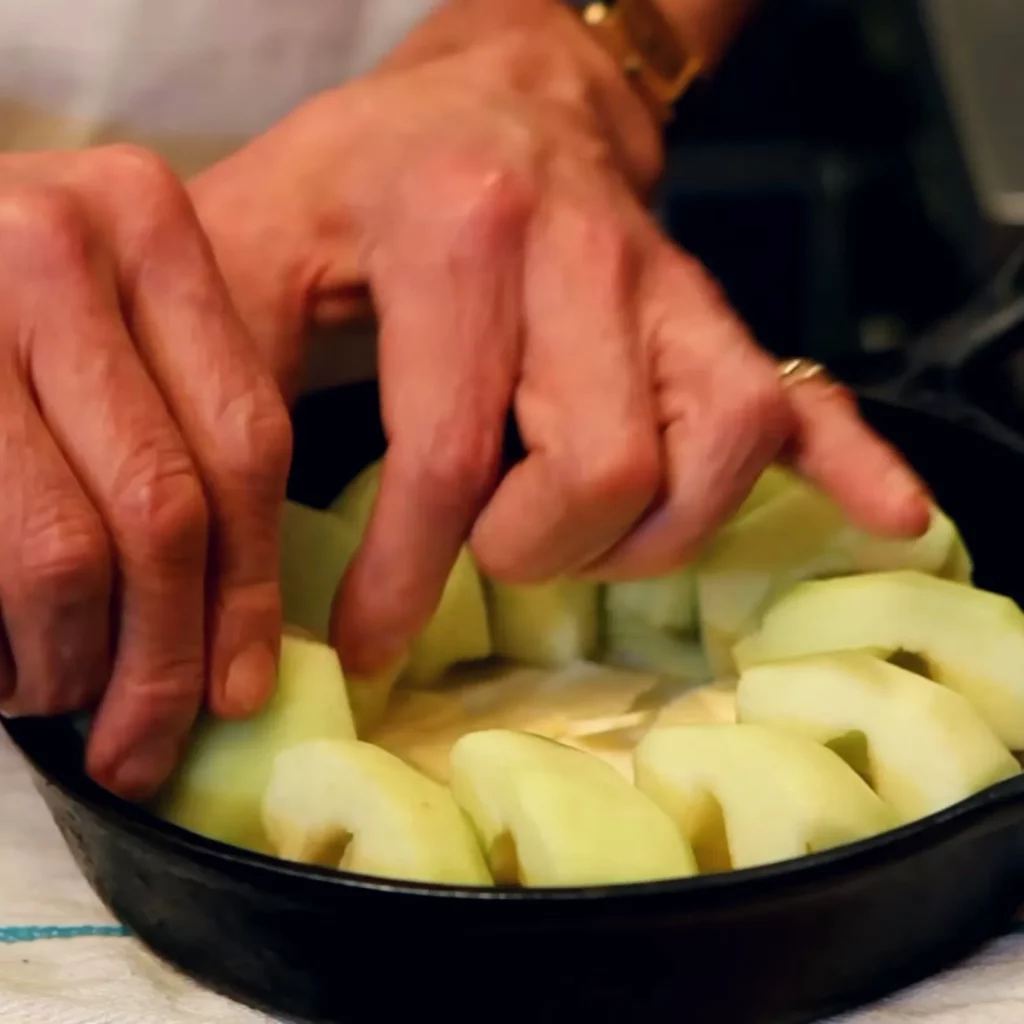
- Pre-cook the apples on the stovetop
The apples cook gently over medium-low heat for about 12–15 minutes. This step allows the juices to release and reduce so the tart isn’t watery later.
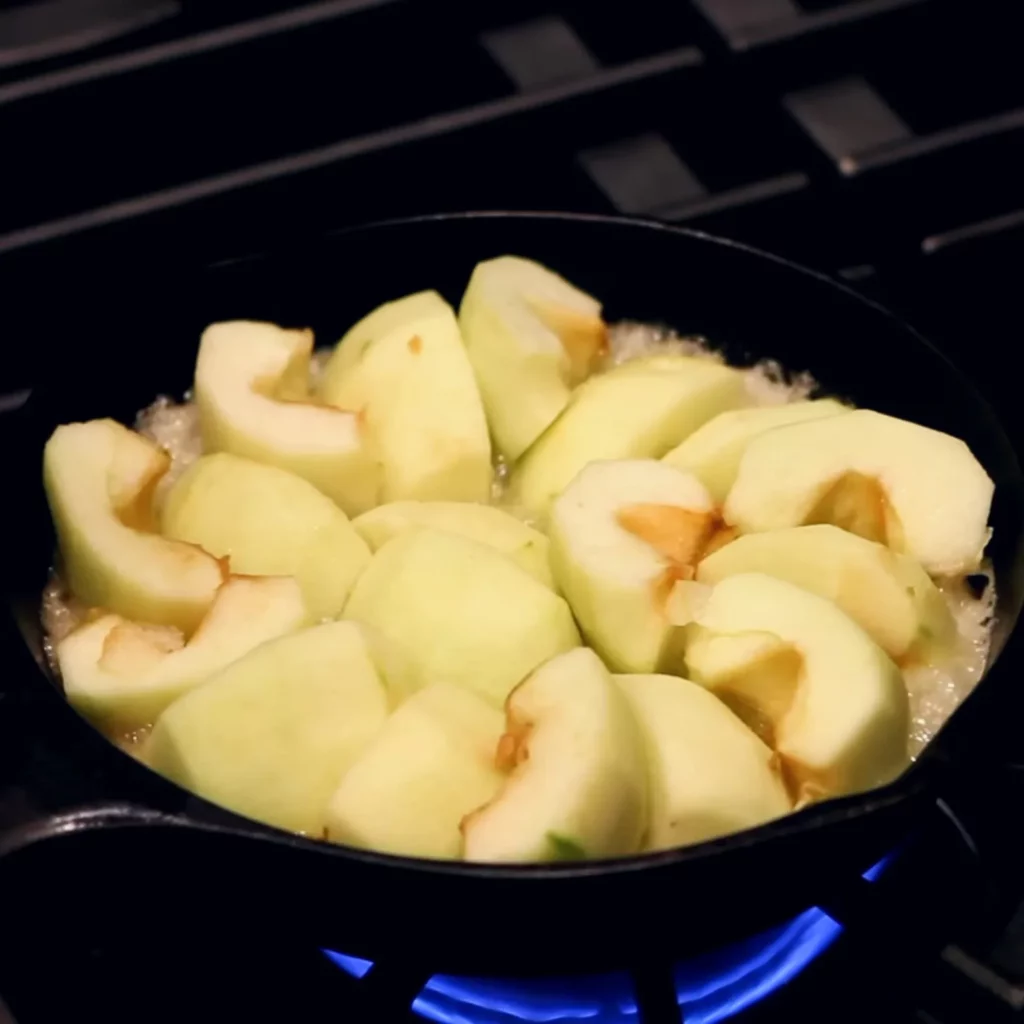
- Cover with pastry and bake
A chilled disc of pâte brisée or puff pastry is placed over the apples, tucked in around the edges, and baked until the pastry is deep golden and the juices are bubbling around the sides.
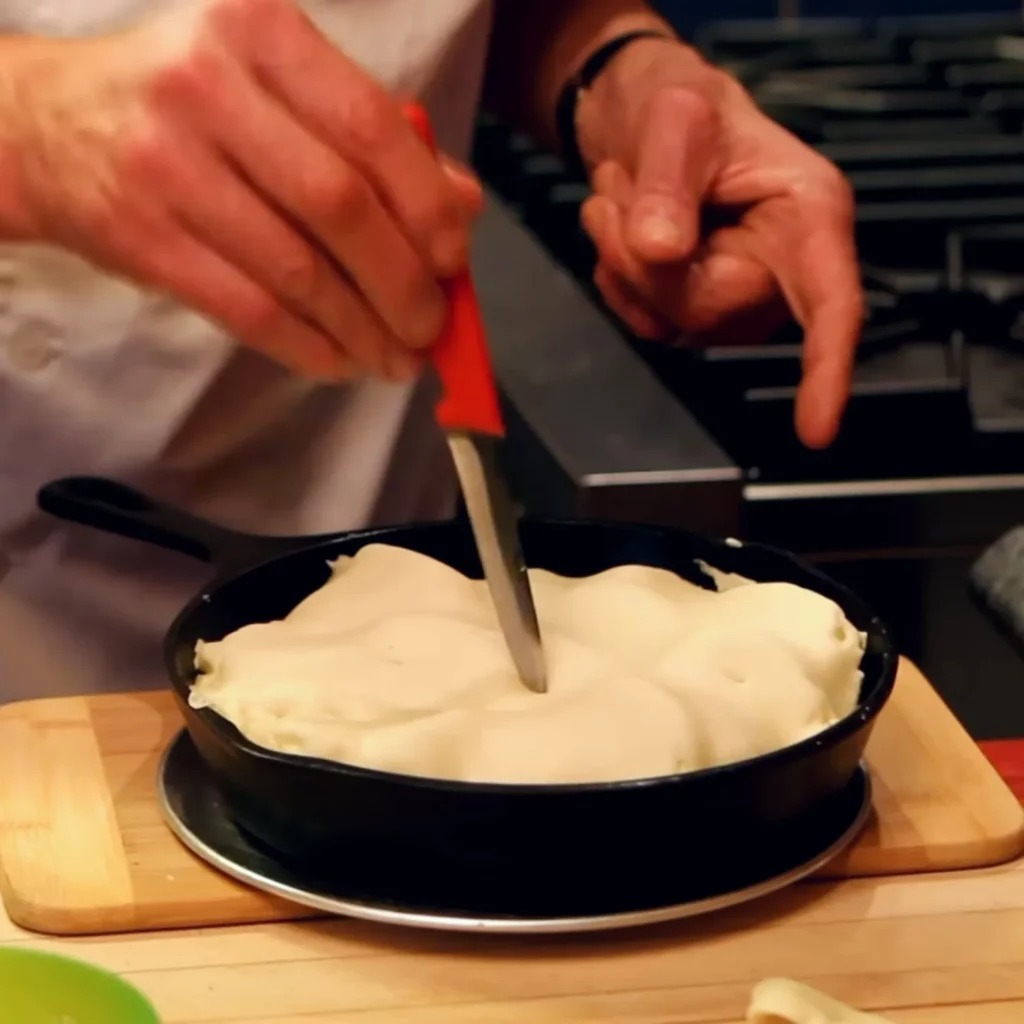
- Rest and flip
After baking, the tart rests for a few minutes to let the caramel thicken. Then the whole thing is flipped confidently onto a serving plate.
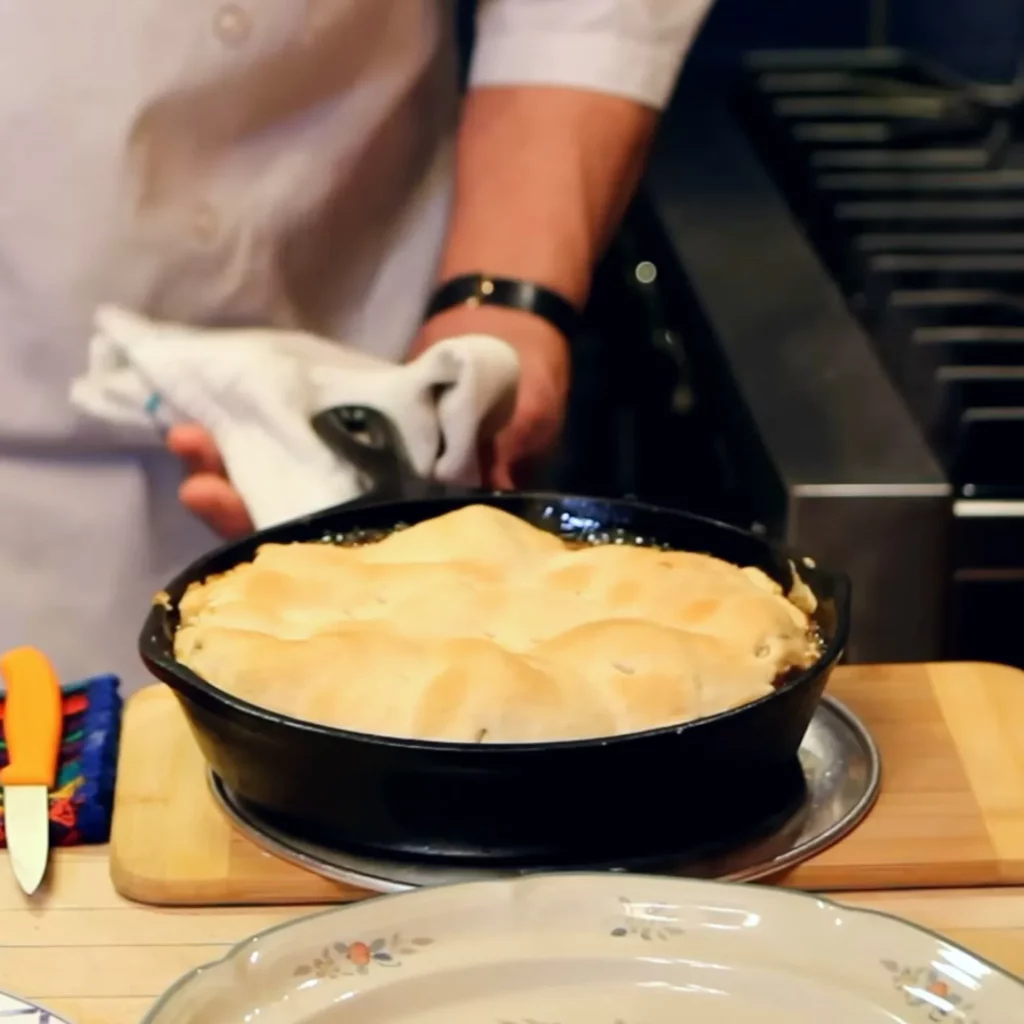
Tips for a Perfect Upside-Down Apple Tart
- Use a heavy pan
A 21 cm (9-inch) cast iron skillet or heavy oven-safe pan distributes heat evenly and helps the caramel cook properly. - Don’t rush the caramel
It should be deep golden—not pale, not burned. When it smells like toffee and the bubbles look slightly thicker, you’re there. - Pack the apples tightly
They shrink as they cook. Any empty spaces will turn into caramel “holes” on top. - Let the tart rest before flipping
Three to five minutes is ideal. Too soon and the caramel is very liquid; too late and it can stick. - Serve warm with something cool
A scoop of vanilla ice cream or a spoonful of no-churn dark chocolate ice cream makes the contrast even more special.
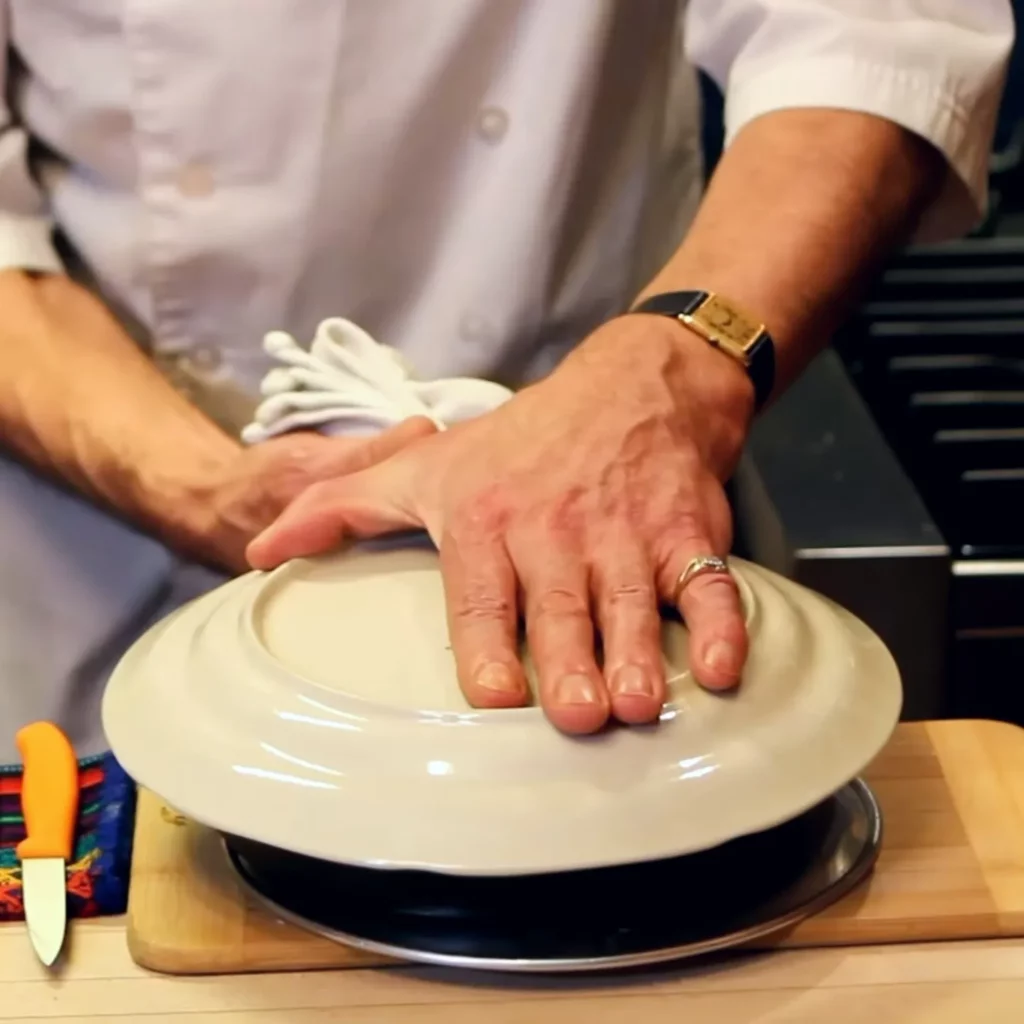
Possible Substitutions
- Apples
Replace part of the apples with firm pears for a tarte tatin-style pear and almond tart variation. Make sure the pears are not too ripe. - Pastry
Use store-bought all-butter puff pastry instead of pâte brisée for a lighter, crispier crust. Keep the quantity similar (one disc that fits a 9-inch pan). - Sugar
Use a mix of white and light brown sugar (50/50) for a deeper caramel flavor. Avoid dark brown sugar which can overpower the fruit. - Flavoring
Add a little ground cinnamon, vanilla extract, or a splash of Calvados or brandy at the very end of the stovetop stage, off the heat.
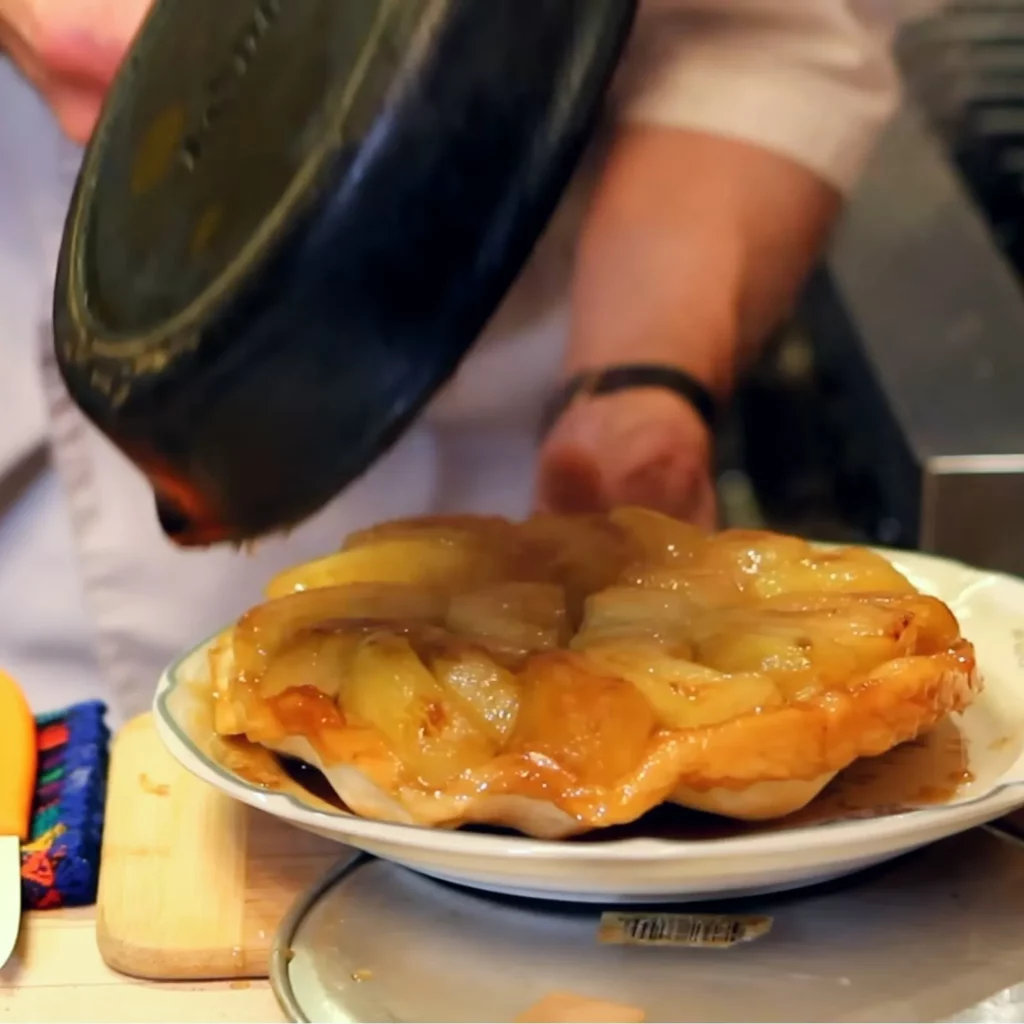
What to Serve with Tarte Tatin
Tarte tatin is the star of the show, but it fits nicely into a full French-inspired menu. Start with a cozy main dish and finish with a slice of this upside-down apple tart.
For the savory part of the meal, you can pair it with:
- A slow-cooked classic boeuf bourguignon
- Comforting duck confit with homemade mashed potatoes
- A rich holiday main like roast turkey with bacon bread stuffing
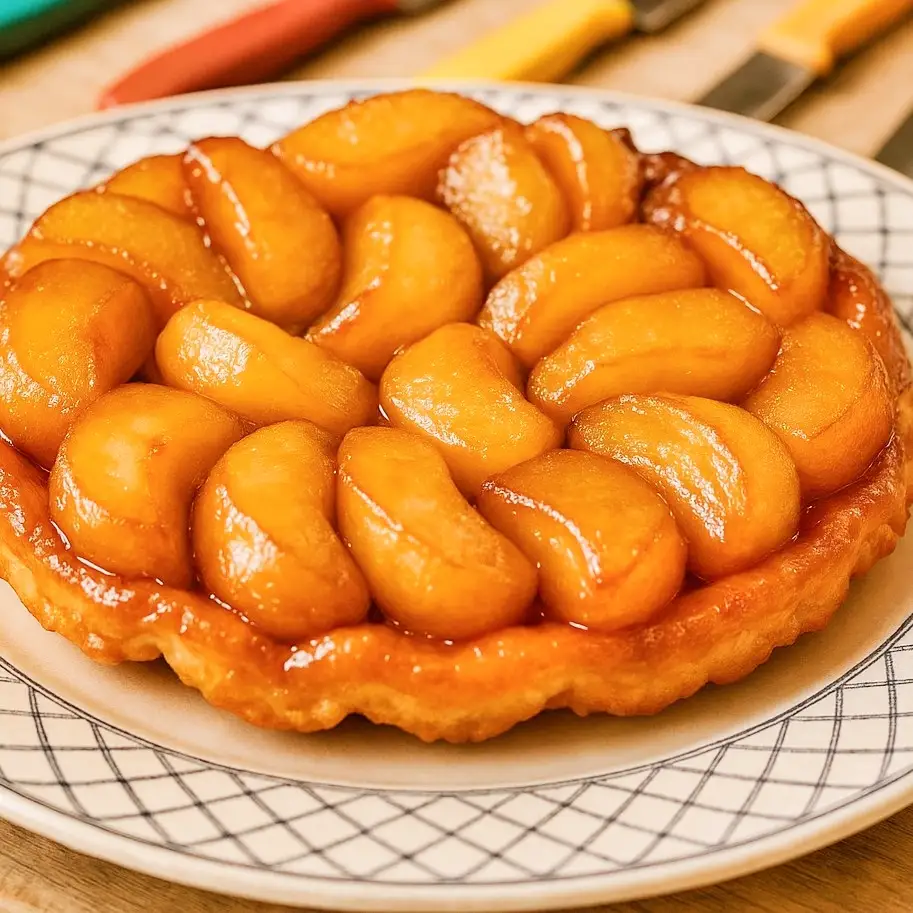
For dessert lovers, here are more French desserts to explore:
- Crème caramel
- Crème brûlée with caramelized top
- Homemade tiramisu
- Rustic French rice pudding
- Moist and fluffy blueberry muffins for brunch the next day
For more ideas, the full dessert index and blog are filled with French-inspired treats and seasonal recipes.

FAQ – Tarte Tatin
Can I make tarte tatin ahead of time?
Yes. Bake it fully, let it cool, and keep it at room temperature for up to 6 hours. Reheat gently in the oven at 300°F (150°C) for 10–15 minutes before serving. It’s best freshly flipped, but it reheats well.
Can I reheat it the next day?
You can, but the pastry will not be as crisp. Warm slices in a low oven or microwave and serve with ice cream to refresh the textures.
Why did my caramel crystallize?
Usually this happens if the sugar crystals on the sides of the pan weren’t dissolved or if the heat was too high. In this recipe, the butter and a little lemon juice help keep the caramel smoother and more stable.
Why is my tart watery?
Either the apples had high water content or the stovetop stage was too short. Make sure the apples simmer long enough for their juices to reduce and the caramel to thicken before adding the pastry.
Can I use frozen puff pastry?
Yes—just thaw it according to package directions and keep it cold until the moment you place it over the apples.
Can I use other fruit?
Yes. Firm pears, firm peaches, or even a mix of apples and pears work nicely. Make sure the fruit isn’t overripe, or it will collapse and release too much water.

Classic French Tarte Tatin (Upside-Down Caramelized Apple Tart) – Foolproof Recipe
Ingredients
For the apples and caramel
- 800 g 1 ¾ lb firm apples (Granny Smith, Honeycrisp, Cortland), peeled, cored, cut into large wedges
- 150 g ¾ cup granulated sugar
- 80 g 6 tbsp unsalted butter, cubed
- 2 g ¼ tsp fine salt
- 5 g 1 tsp lemon juice or apple cider vinegar
For the pastry
- 250 g 9 oz pâte brisée or all-butter puff pastry, chilled, rolled to about 3 mm (⅛ inch) thick in a 26–28 cm (10–11 inch) circle
To serve (optional)
- 120 ml ½ cup whipping cream, softly whipped, or vanilla ice cream
Instructions
- Preheat the oven to 375°F (190°C).
- In a 21 cm (9-inch) heavy, oven-safe skillet, sprinkle the sugar evenly. Add the butter cubes on top. Place over medium heat and cook without stirring until the sugar has mostly melted. Swirl the pan gently until the mixture turns a deep golden amber.
- Add the salt and lemon juice, swirl again, and remove from the heat.
- Arrange the apple wedges tightly in the caramel, core side facing up, starting from the outside and working toward the center. Pack them as tightly as possible; they will shrink as they cook.
- Return the skillet to medium-low heat and cook the apples for 12–15 minutes, gently simmering. The apples should soften slightly, release their juices, and the liquid should reduce and thicken.
- While the apples cook, roll out the pastry into a thin circle slightly larger than the skillet. Keep it chilled until needed.
- Remove the pan from the heat. Lay the pastry over the apples, tucking the edges down along the inside of the pan so it wraps the apples like a blanket. Prick the pastry a few times with the tip of a knife to let steam escape.
- Bake for 25–35 minutes, until the pastry is deep golden brown and caramel is bubbling around the edges.
- Remove from the oven and let rest for 3–5 minutes. Place a large serving plate over the skillet and, using oven gloves, flip the tart in one confident motion. Carefully lift off the skillet and scrape any remaining caramel from the pan onto the apples.
- Serve warm, plain or with softly whipped cream or ice cream.
Video
Notes
FAQ – Tarte Tatin
Can I make tarte tatin ahead of time?Yes. Bake it fully, let it cool, and keep it at room temperature for up to 6 hours. Reheat gently in the oven at 300°F (150°C) for 10–15 minutes before serving. It’s best freshly flipped, but it reheats well. Can I reheat it the next day?
You can, but the pastry will not be as crisp. Warm slices in a low oven or microwave and serve with ice cream to refresh the textures. Why did my caramel crystallize?
Usually this happens if the sugar crystals on the sides of the pan weren’t dissolved or if the heat was too high. In this recipe, the butter and a little lemon juice help keep the caramel smoother and more stable. Why is my tart watery?
Either the apples had high water content or the stovetop stage was too short. Make sure the apples simmer long enough for their juices to reduce and the caramel to thicken before adding the pastry. Can I use frozen puff pastry?
Yes—just thaw it according to package directions and keep it cold until the moment you place it over the apples. Can I use other fruit?
Yes. Firm pears, firm peaches, or even a mix of apples and pears work nicely. Make sure the fruit isn’t overripe, or it will collapse and release too much water.
Useful Links
🛒 Michel Dumas Shop : Explore our kitchen essentials, including aprons and knives.
🌐 Linktree : Access all our important links in one place.
📱 YouTube | Instagram | Facebook | TikTok : Follow us for the latest recipes and culinary tips.
